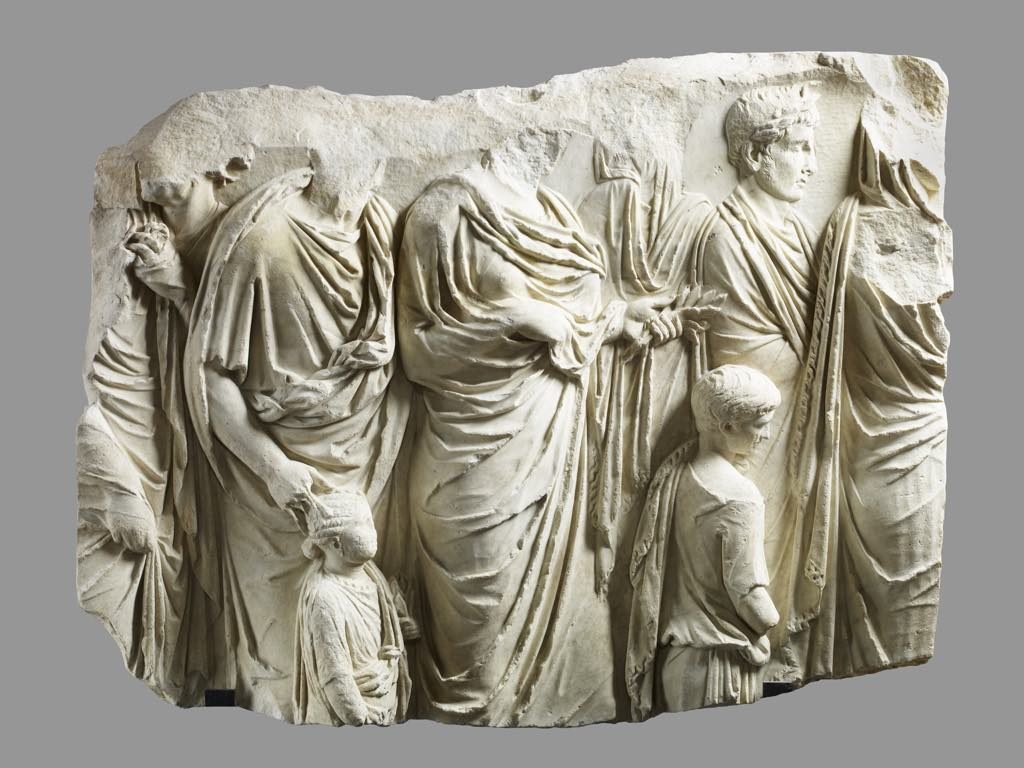
It’s a story of acquisitiveness comparable to that of William Randolph Hearst, who is said to have owned a quarter of the world’s art at one point and whose life was immortalized in Orson Welles’s film Citizen Kane. A fascinating exhibition at the Louvre, “Un Rêve d’Italie: La Collection du Marquis Campana” (“A Dream of Italy: The Marquis Campana’s Collection”), tells the story of Giampietro Campana, the Italian Citizen Kane.

Campana, head of the Monte di Pietà in Rome, an institutional pawnbroker and important financial institution of the Papal States, was mad about Italian and Greek art and antiquities and passionate about defining Italy’s cultural heritage at a time when the struggle for the reunification of the country was underway.
Between the 1830s and ’50s, Campana amassed a collection of some 12,000 pieces and financed archaeological expeditions to find more. His collection was sold off by the Papal States and dispersed, however, after his spectacular downfall following a conviction in 1857 for embezzling from the Monte di Pietà to finance his obsession. For his punishment, he was forced into exile, which he spent in Britain.
The Louvre’s exhibition reunites some 500 pieces from the collection, most of which was purchased by the French government for the Louvre and French regional museums. The State Hermitage Museum in Saint Petersburg, which also acquired a chunk of the collection, participated in mounting this exhibition and will show it after the Louvre.
In his heyday, Campana cataloged his collection and displayed it in a few locations in Italy. The exhibition loosely follows his categories and does a great job of sampling the massive collection, with sections on vases, bronzes, jewelry and coins, terracottas, glassware, sculpture, antique paintings, maiolica, decorative objects and curiosities like Antique erotic objects and household items like a bone sewing needle.
Notable pieces abound. Many treasures came from Campana’s excavations at Cerveteri, the Etruscan necropolis, including the famous “Sarcophagus of the Spouses” (pictured at the top of this page), a favorite of visitors to the Louvre, with their affectionate pose and smiling faces (and note the stylish pointy shoes worn by the wife), along with a number of stunning Greek vases from the same site. There is also a small collection of elegant Etruscan vases in bucchero, or black ceramics.

There are many standouts among the paintings, among them a crucifix painted by Giotto, Uccello’s “Battle of San Romano” and a Virgin and Child by Botticelli, while Campana’s maiolica collection is represented by a number of superb pieces.

A large number of works come from the workshop in Florence of the Della Robbia family, including an especially sensitive bust, “Young Apostle,” by Andrea della Robbia, nephew of Luca della Robbia, inventor of a technique for tin-glazing ceramics.
One section of the show demonstrates how many pieces in Campana’s collection were abusively restored, among them a Corinthian krater, found in Cerveteri, whose restorer didn’t even bother to stay within the lines incised by the original artist when repainting it.
The exhibition led to a few discoveries. When the representatives of France went to Italy to pick up the booty from the Campana collection destined for French museums in the 19th century, they had missed out on a few things, including a collection of shards, which ended up in Florence. One of those shards, for example, has now been matched up with a red-figure Greek krater depicting Heracles dating from the fifth century B.C.E. and attributed to the Berlin Painter. It now belongs to the Louvre.
Campana had also hidden a number of Greek vases from the French buyers, hoping to keep them for himself. It didn’t help. They ended up being purchased by the Belgian government. One that he was especially attached to, an Athenian kantharos by the painter Douris showing Herakles and Telamon fighting the Amazons, also from fifth century B.C.E., is on show in the exhibition.
I couldn’t find out much about the rest of the life of the marquis, except that after the reunification of Italy, he returned to Rome and tried to get back some of the money from the sale of his collection, to no avail. He died in 1880. What was his Rosebud? That Athenian kantharos by Douris? We’ll never know.
If you enjoyed this article, you might also like “Private Collections: A Journey from the Impressionists to the Fauves.”
Favorite
Thanks for this great article! I happen to know a bit about this as back in my art historian days, I wanted to write a book about Napoleon III, the French emperor who purchased the pieces from the Campana collection for France. In fact he wanted to open his own museum on the Champs Elysées. He tried to get artists like Delacroix and Ingres to sign on to his project, but they were worried about competition that the museum would represent for the Louvre and so they vocally opposed his grandiose scheme. His empire fell, the project fizzled, and only then were the pieces incorporated into the Louvre’s collection. I guess given recent events on the Champs Elysées, that’s probably for the best!
Great article. In viewing the show I was struck by the uneven quality of the works acquired by the Marquis. If you believe that you have unlimited funds there’s less need to pick and chose and you can acquire everything that’s on the market. With guidance from Duveen and Berenson collections such as the Frick and the Gardner made astute choices but were less encyclopedic. The Marquis acquired vast numbers of objects; impressive in its own way.